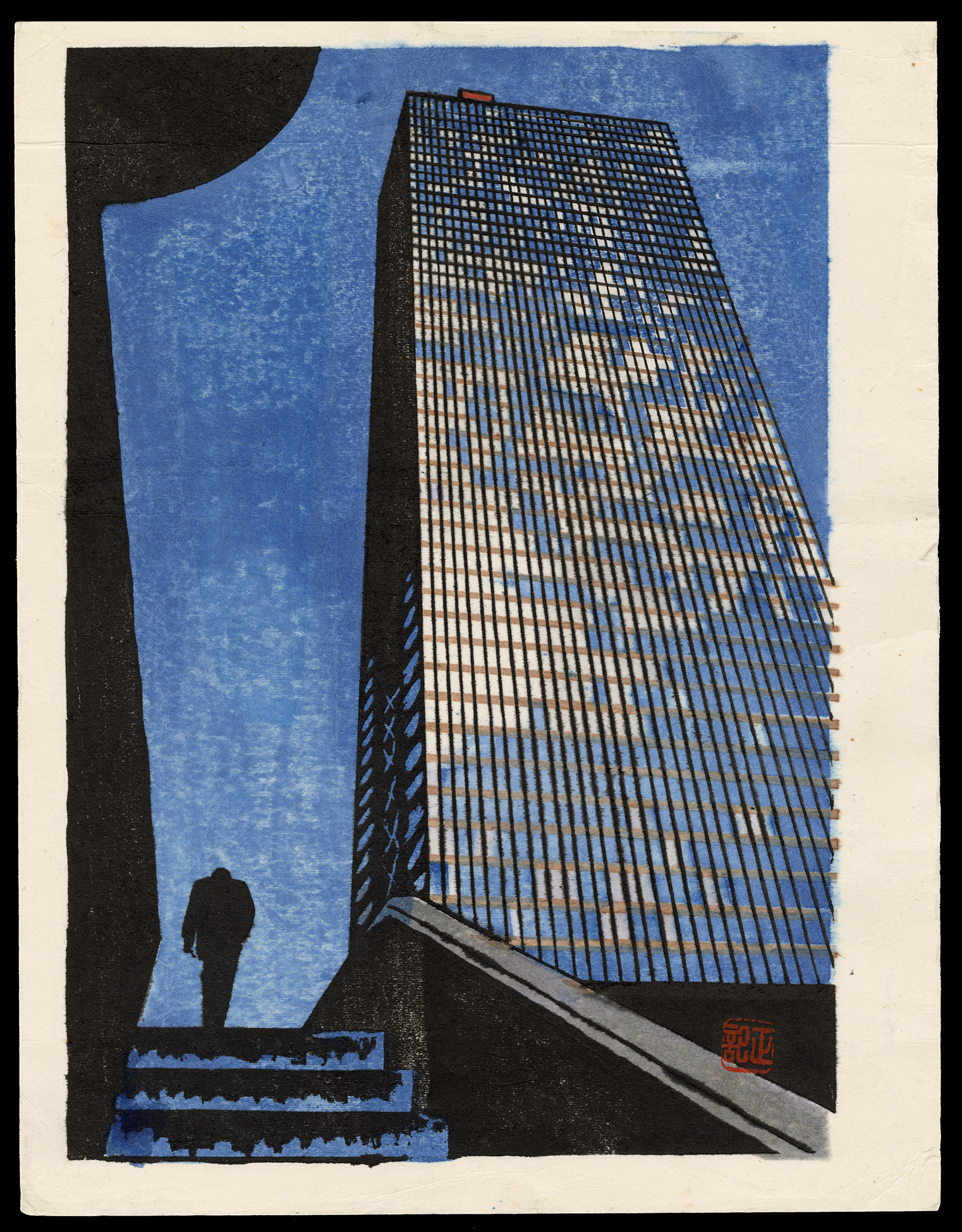<b>SHINJUKU MITSUI BULDING</b> / Masaki Suzukic.1985<b>SOLD</b></em>
ARTIST: Masaki (Masanori) Suzuki
TITLE: Shinjuku Mitsui Building
MEDIUM: Woodblock
DATE: c. 1985
DIMENSIONS: 13 3/4 x 10 5/8 inches
CONDITION: Excellent; printer’s creases at margins
SOLD
ARTIST: Masaki (Masanori) Suzuki
TITLE: Shinjuku Mitsui Building
MEDIUM: Woodblock
DATE: c. 1985
DIMENSIONS: 13 3/4 x 10 5/8 inches
CONDITION: Excellent; printer’s creases at margins
SOLD
ARTIST: Masaki (Masanori) Suzuki
TITLE: Shinjuku Mitsui Building
MEDIUM: Woodblock
DATE: c. 1985
DIMENSIONS: 13 3/4 x 10 5/8 inches
CONDITION: Excellent; printer’s creases at margins
SOLD
Details
This contemporary Japanese woodblock print was produced circa 1985 when Japan was the world economic leader, a time when office buildings sprouted up in Tokyo’s landscape like weeds. The driving force behind the economic boom was the Salaryman (known in Japan as Sarariman), a salaried white-collar worker who is known for his overriding loyalty to the corporation where he works. Their work ethic is often compared to that of samurai, as their dedication to their employers is unyielding, routinely working incredibly long days over the years without personal time off.
This striking design shows a towering office building in the late evening with numerous windows lit, undoubtedly Salarymen burning the midnight oil at their highly demanding positions. A lone figure in the silhouette of a man in a suit (a typical representation of a Salaryman), is about to descend a darken stairway, presumably on his way home. Interestingly, the figure is not shown heroically, as his head is downturned, suggesting fatigue or preoccupation. With the towering and unyielding office building in the background and the shadowy world left for the figure to navigate through, the design may be a polemic to the harsh lifestyle these Salarymen lead.
Connoisseur's Note
The print’s rough and expressive printing style suggests an artist working in the Sosaku Hanga idiom; presumably, it is a work entirely produced by the artist himself. The design has a manga-like or even video game–like appearance, the work of Saito Takao and his Golgo 13 come to mind. Produced during a historic era for Japanese enterprise, this fascinating design is also an important historical work that documents this period for posterity.


